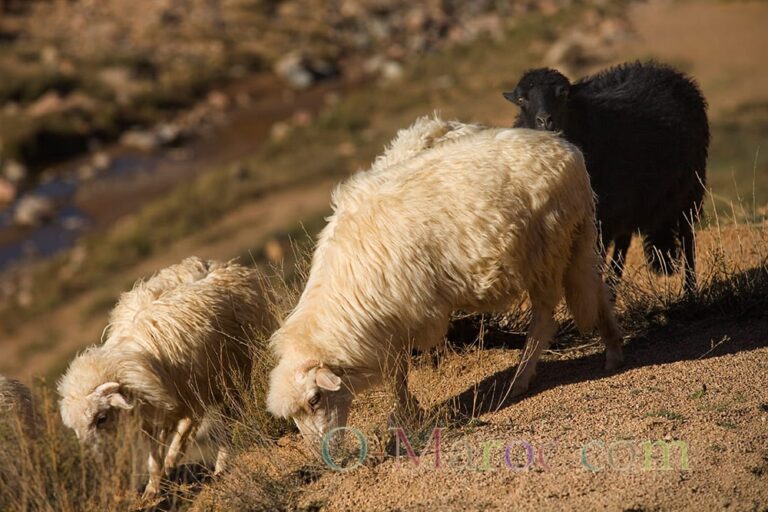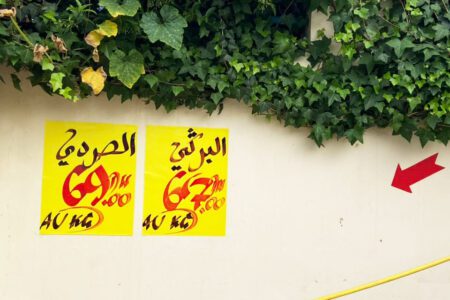If you’re celebrating Eid, are you a “horned” sheep or a “little horned” sheep?
There are two main breeds of sheep in Morocco, the ‘Sardi‘, whose horns are quite impressive – and beautiful – and the ‘Beldi‘. In reality, the term ‘Beldi’ covers several different breeds, each adapted to a particular environment. In all, there are almost a hundred breeds of Beldi sheep. The Sardi and five other breeds were selected as “breeds of major economic interest” when the sheep plan was drawn up in the 1980s.
The sardi sheep is the Eid sheep
The sardi sheep originated in Morocco, more specifically on the western plateaux between Beni-Mellal, Settat and Khourigba. The breed has nоthіng tо ԁо with the so-called “Sicilian-Sardinians“, introduced into the eastern Maghreb (Libya and Tunisia) at the end of the 19th century, which have no horns.
It is an elegant sheep, white with a muzzle and black spots on the head (it is even referred to as a spectacled sheep) and black hooves that give the impression that it is shod. Its name, صردي , probably means “enduring the cold well” (Arabic root صرد ).
For Eid, it is generally chosen young, around a year old. The Berbers call it Anougoud (not a breed, but a word meaning “young ram” or sheep, or mutton).
Other breeds are called “beldi” sheep.
So there are almost a hundred local breeds of sheep in Morocco, not always clearly distinguishable from each other, and often crossed with each other unintentionally (Madame Brebis from one flock and Monsieur Bélier from another munch the same grass, and more if they are so inclined…). Of all these breeds, in addition to Sardi, five others were selected in the early 2000s and are the subject of an improvement plan and a PDO. (a region defined as the “cradle of the breed“) like the sardi.
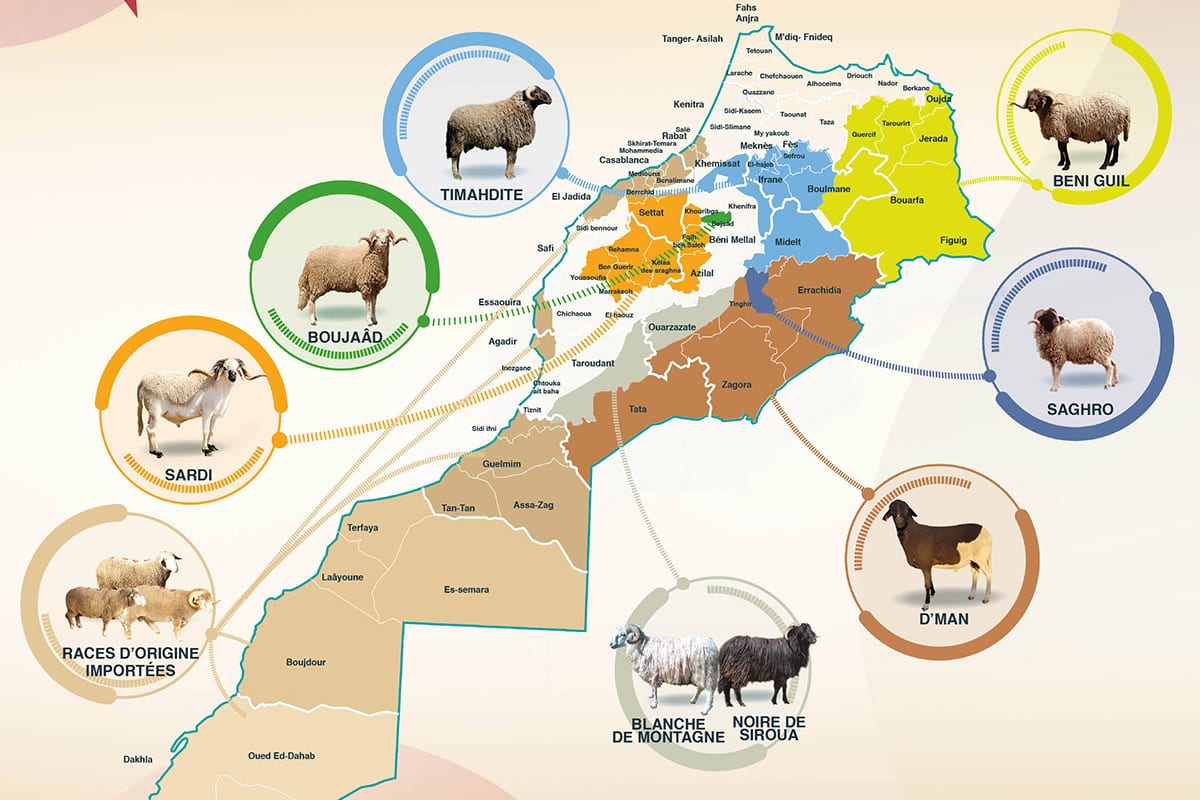
There are:
- Timahdit, a breed found on the plateaux of the Middle Atlas and on the Atlantic coast. It has an attractive fawn-brown head and abundant white or brown wool. Only the male hаѕ hоrnѕ, which are also white. It is bred mainly for its meat, so it also provides the sheep for the Eid celebrations. A fine adult male can weigh up to 100 kilos, as with the sardi.
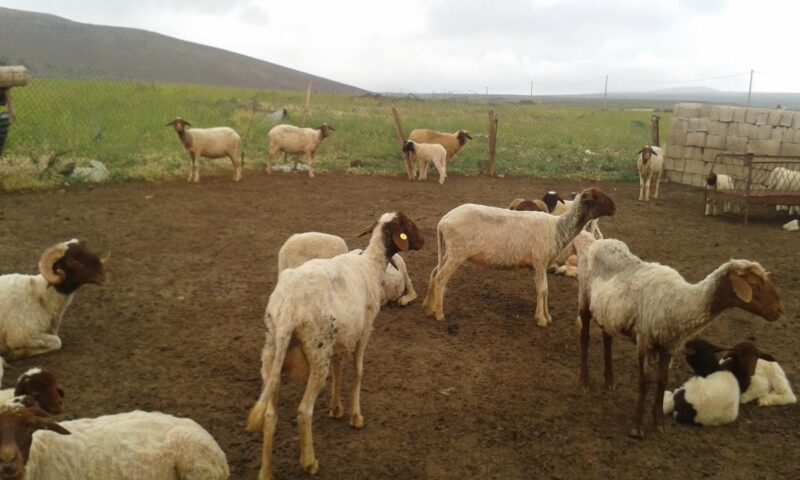
Timahdit ewes and lambs - Beni Guil, a breed found in the Oriental region. It is known for its good adaptation to the dry and very arid climate. The head is brown, darker in the male than the female, and the legs are also brown or tan. The male has open spiral horns, like the sardi. It is slightly smaller, with the maximum weight of a male being 90 kilos.
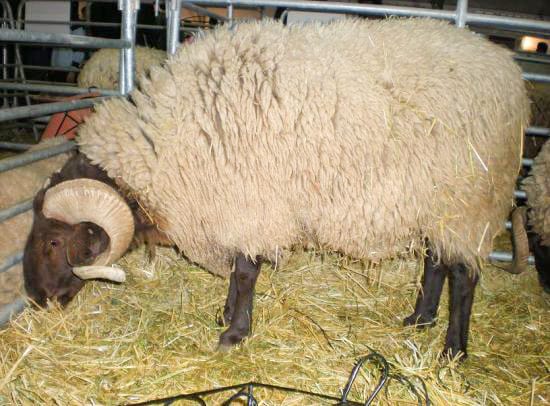
Dense wool, dark legs and head and pretty white horns, this is the Beni Guil - D’man: with around 650,000 head, this breed is found in the Ziz and Tafilalt, with a breeding system known as “oasis”, in small enclosures on farms, very different from the extensive breeding still practised in nomadic areas. Feed is based on green alfalfa and waste from family farms (dates, market gardening, barley, etc.). This is a ‘meat’ breed that reproduces very well, the same breed that my mother-in-law breeds in the country. As Damans have no horns, this is undoubtedly the reason why my husband prefers hornless animals, as nothing can match ‘mother’s sheep’. The fleece can be white, brown or mixed, and the male does not exceed 70 kilos.
- Boujaâd, found around Beni-Mellal and Khourigba. It is also known as the “Yellow Sheep”, because of the colour of its head. It is a small breed, with the male weighing a maximum of 80 kilos.
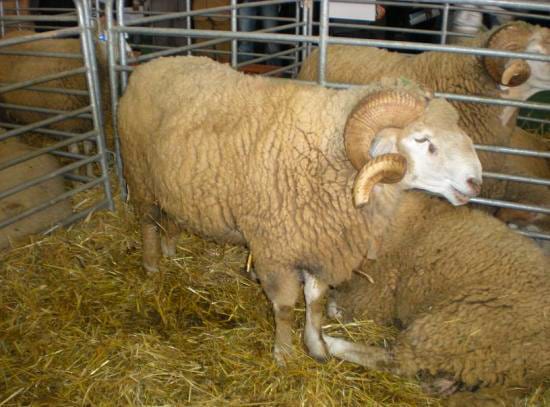
A Boujaad sheep with large horns - Beni Hsen, found in the north of Morocco, on the Atlantic coast, in the Loukkos and Gharb regions. It is one of the few Moroccan breeds to produce a lot of wool, white of course, and of good quality. The head is dark brown, with long horns. The breed is small, with an adult male weighing no more than 80kg.
- In addition to these five breeds, the ANOC (Association Nationale des Ovins et des Caprins – National Sheep and Goat Association) promotes three other Berber mountain breeds: the Blanche des Montagnes (Moutain Whites), which is as woolly as you could wish for, the Noire de Siroua (Sirwa Black), found around Ouarzazate and Taroudant, and the Saghro… in Jbel Sagho !
Sheep supply for Eid
Eid is, of course, the time when livestock farmers reap a large part of their income for the year. For the past two years, there has been a significant oversupply. Competition is fierce to present a good-sized, plump sheep, and last-minute methods are common. Each year sees its own health scandal, more or less significant, with carcasses taking on unappetising colours (the ‘green meat’ of 2016)… this year, there was talk of chicken droppings being used as feed, I don’t know if it’s true.
This year, while there was theoretically a surplus of supply, the ban on movement has turned everything upside down: sheep are harder to find, especially in the 8 towns affected, consumers are also very skittish, and prices are falling.
Boulfafs and Guedid
Whether it’s sardi or beldi, you don’t eat much mutton on the same day.
Firstly, because the meat has to rest a little (mature), and also because the whole family is busy preparing it. The midday meal will often be very quick, more of a snack than anything else.
Boulfafs: liver kebabs wrapped in caul fat
In the evening, it’s the Boulfafs ceremony, one of the two inseparable dishes of Aid, the recipe for which you can find in the video below:
There’s quite a ceremony involved in eating boulfafs, especially in large families with lots of people: the women prepare the kebabs and cook them, a little boy passes around the plate of kebabs, another brings the glass of tea, a third passes around the bread, cumin and salt. There are usually only one or two skewers per person per serving, and then another child picks up the empty skewers for the next “batch” (actually, “grill”).
Boulfafs are fatty, fragrant and tasty.
Gueddid: dried meat
Some of the meat is immediately spiced, marinated, cut into pieces and hung out to dry in the sun.
The guedid is later desalted and used in tagines, tangias and other simmered dishes. Pieces of gueddid are sent to family members who were unable to attend, and it is said that gueddid gives the baraka. In any case, it bears the love of the mother who prepared it for the children she would have liked to see around her!
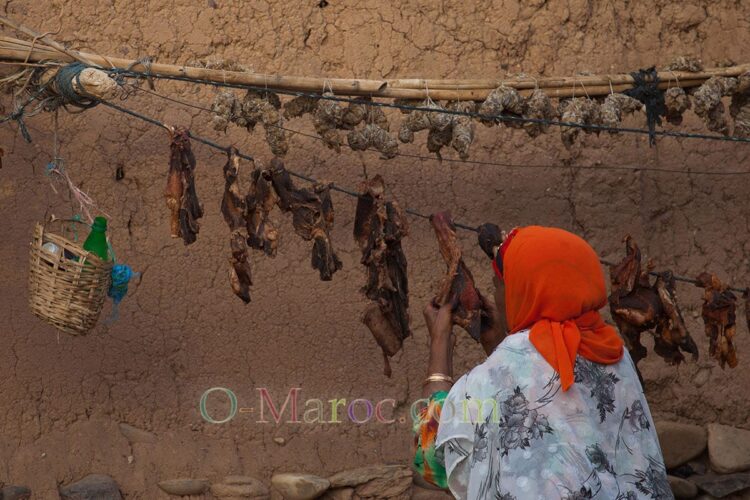
Gueddid is also an ingredient in “khliia” meat, which is preserved in fat.
 A typo or syntax error? You can select the text and hit Ctrl+Enter to send us a message. Thank you! If this post interested you, maybe you can also leave a comment. We'd love to exchange with you !
A typo or syntax error? You can select the text and hit Ctrl+Enter to send us a message. Thank you! If this post interested you, maybe you can also leave a comment. We'd love to exchange with you !

